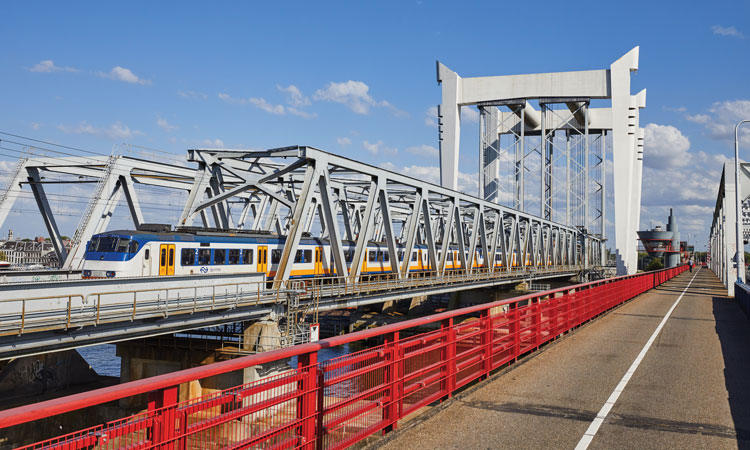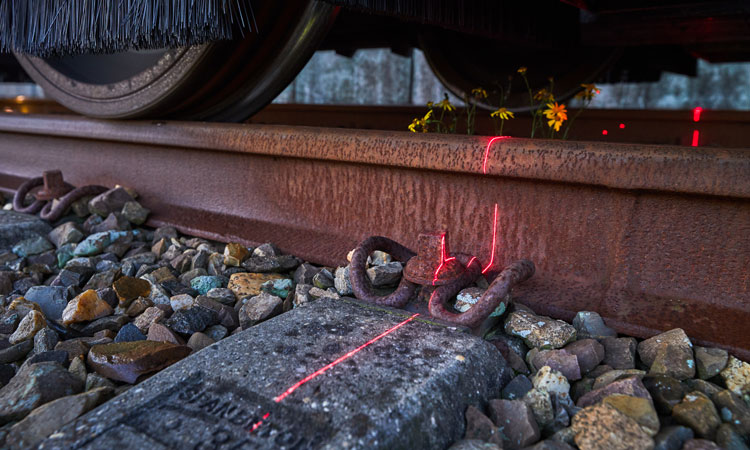Digital Twins: Improving performance through smarter data use
Posted: 9 July 2021 | Thymo van den Brug | No comments yet
Thymo van den Brug, Manager Information Development, Asset Management at ProRail, discusses the concept of digital twins as part of rail’s digital transformation and how the technology can equip ProRail employees with greater insight into the health and condition of complex and vital assets.


Credit: Vincent Basler
The Dutch railway system is one of the busiest and most punctual railway networks in the world. Despite the enormous impact of COVID-19 worldwide, we are still expecting a more than 30 per cent increase in traffic on our network by 2030. And, almost like metro networks in the great cities of the world, this will be timetable-less traffic. No need to check your smartphone on many routes, a train will arrive within minutes to take you to your next destination. This requires substantial investments in new railways and the European Rail Traffic Management System (ERTMS), as well as the smarter management of existing assets. The process of maintaining, or even improving, safety, availability and performance within the increase of traffic presents us with an enormous challenge.
The increase in passenger and freight trains will also lead to the increased wear of our assets. Moreover, the necessary time available for (emergency) maintenance activities or renewal will become ever sparser, and, on top of that, each disruption will have a greater impact, affecting more passengers and freight forwarders. These issues require a different approach. At ProRail, we consider a ‘data-driven approach’ to be one of the best solutions to confront these challenges. We are shifting our focus to looking ahead, making predictions and acting based on new insights. Can we predict malfunctions and necessary replacements, so that we can take proper action ‘(just) in time’? The concept of the digital twin is a key part of this digital transformation. It’s a way to present our insights on our current and future assets to our users.
Over past years, we discovered that algorithms are more useful if the acquired data is of adequate quality. Putting garbage in means that garbage will come out, as well.
Using excellent data to manage the logistical process, to steer trains, has become the natural order of things. Not a single train enters the tracks if the data in the Control and Command Systems and the Traffic Management System are wrong. Unfortunately, the same cannot be said for the condition of the other assets, such as rails, embankments, bridges, tunnels, switches and overhead power lines. These ‘traditional systems’ – made of concrete, iron, copper etc. – were not designed to be capable of smart communication to provide continuous insight into their health. That’s why we monitor the condition of these systems through sensors fitted on special trains, retrofit Internet of Things (IoT) sensors on assets and we regularly perform manual condition assessments. By upgrading the frequency of and automating condition monitoring, we get more relevant data and insights to manage the complete system better.
Data is not the same as information
To make this matter even more complicated, data is not the same as information, and this is especially true if you want to make useful predictions. We increasingly want to know what is going to happen on the tracks, rather than to know what happened. Right now, we are not making things easy for end-users in this regard. It is difficult to turn the vast amount of data from the various information systems – which are all based on different information models – into useful information.
The digital twin is the ideal way of providing ProRail employees with that integral insight into our assets. This can be done in a fancy 3D format, but also as a straightforward geographical map, a schematic overview or simply as a list of assets. We therefore work with our own integrated information model, allowing us to structure the asset data from the source in such a way that it becomes easily compatible. This will make the object-oriented data easier to process, link and integrate.


With sensors fitted to assets, ProRail can obtain more relevant data and insights to enable them to manage the complete system better. Credit: Vincent Basler
Advanced analytics for greater insight
ProRail is, moreover, focussing on advanced analytics, which allows us to create the necessary insights. We are transforming all of this big data into useful information. For example, based on historic wear, acquired using special surveying trains, we can now determine the latest possible replacement over time for each track in the Netherlands. We extrapolate the historic data to the future and take into account new variables, such as the expected increase in rail traffic and the type of trains, as well as climate change. This gives us greater insight into the lifespan, risks, budgets and expected performance. We use these insights to schedule asset replacements more cleverly.
AI in rail cannot be stopped and will help our railway system to perform even better in the future.
Our end-users’ hunger for insight into the degradation of railway assets encourages us to look into different new methods of gathering data, such as new types of IoT sensors, as well as high-frequency data acquisition using sensors on regular passenger trains. There are many market developments in acquiring relevant data. A nice example that we created is the automatic analysis of rail photos to find defects, such as small cracks on the rails and sleepers, or erosion close to electrical joints. These photos are taken using cameras on special surveying trains. The algorithms that we developed can detect abnormalities in the photos, in millions of photos, year after year. By comparing images from multiple years, we can even detect trends and deviations from these trends.
Data quality is important
Over past years, we discovered that algorithms are more useful if the acquired data is of adequate quality. Putting garbage in means that garbage will come out, as well. This is an important issue in data‑driven approaches that rarely receives the attention that it merits. Everyone wants beautiful visualisations and insights, but that means that data quality should become more of a priority, as well. On top of that, many of our end-users want to understand how we created the insights that we provide them. This means no ‘black-box algorithms’: Everything has to be transparent and traceable. From raw data, to the insight we deliver. The trend we see among market participants to offer algorithms and platforms ‘as a service’ doesn’t always suit this requirement.
The digital transformation is currently aimed at supporting end-users by transforming data into relevant insights that is used to take the right decisions and action. On the horizon, we can see the rise of artificial intelligence (AI). We are gradually moving towards algorithms that can and will make decisions themselves. The computing and analytical power which is available is so powerful nowadays that it can process more variables automatically than an individual human can. This allows us to make even better simulations, predictions and decisions, or have them made by the algorithm. The way that we will work in the future is changing fast. AI in rail cannot be stopped and will help our railway system to perform even better in the future. In the coming years, there will be a lot of interesting things in store on this topic for the railway industry all over the world.


Issue
Related topics
Artificial Intelligence (AI), Big Data, Digital Twins, Digitalisation, Internet of Things (IoT)








